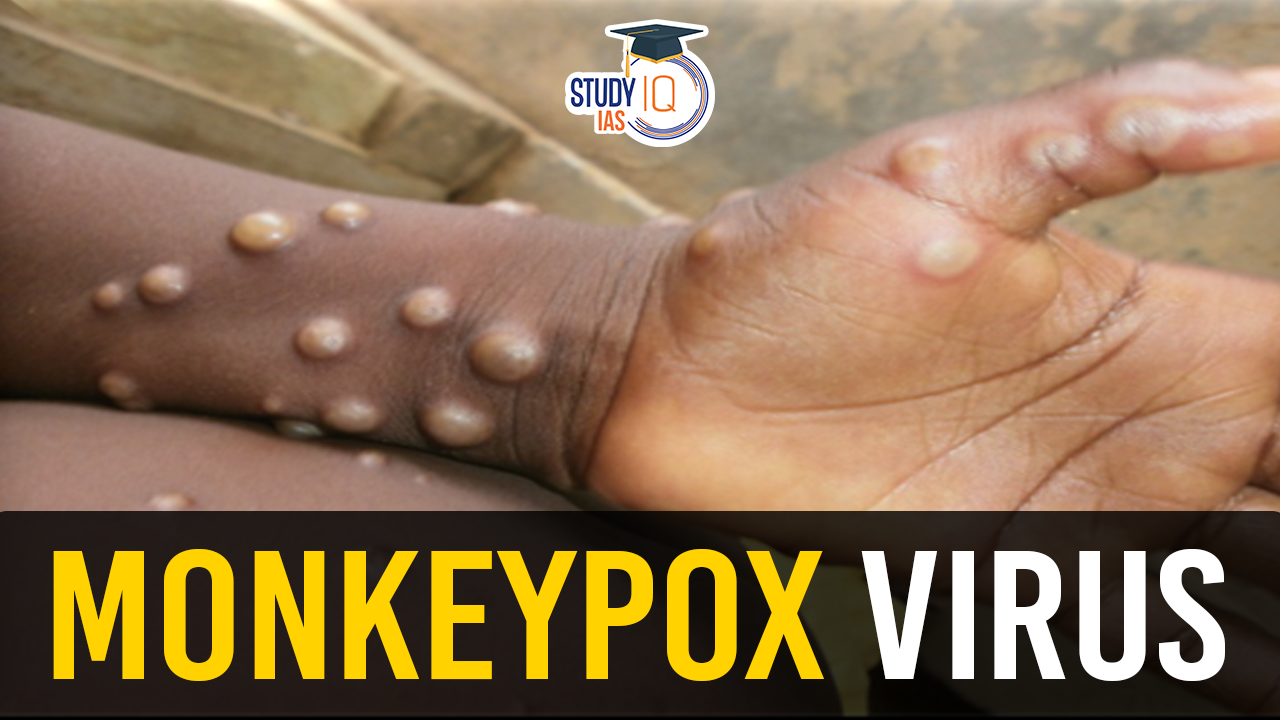Table of Contents
Context
- The Democratic Republic of the Congo (DRC) is currently facing a significant outbreak of Mpox, with more than 4,500 suspected cases and nearly 300 deaths reported since January.
- The outbreak has been declared a health emergency by the Congo government, and cases have also been reported in the neighbouring Republic of Congo.
New Phase of Monkeypox
- Researchers have identified recent genetic mutations in the Mpox virus that suggest the virus is adapting for more efficient human-to-human transmission.
- These mutations were found in samples from patients in Kamituga, a mining town in eastern Congo.
- Unlike previous outbreaks characterised by lesions primarily on the chest, hands, and feet, the current strain features milder lesions often located on the genitals, complicating diagnosis efforts.
- This mutation also seems to have a lower death rate, with most transmissions now occurring through sexual contact.
- Notably, about a third of the cases have been found in sex workers.
Transmission and Global Concerns
- The World Health Organization (WHO) has recognized that the sexual transmission of Mpox, particularly noted during the global emergency in 2022, was significant among gay or bisexual men.
- However, the first confirmed sexual transmission of Mpox in Congo was only reported by WHO in November.
- The new mutations might necessitate a revised testing strategy to effectively identify the disease.
Mpox Virus Clades
- Mpox, which is related to smallpox, has two main clades:
- Clade 1, is more severe, with up to a 10% fatality rate.
- Clade 2, associated with the 2022 outbreak, has a survival rate of over 99%.
- The recent outbreak in Kamituga involves a new form of Clade 1, linked to over 240 cases and at least three deaths.
- This form is particularly concerning because of the area’s high transient population, which could potentially spread the virus more widely across Africa and beyond.
Response and Challenges
- Despite the severe outbreak, Congo has had limited access to Mpox vaccines and treatments.
- The country’s health minister has authorised the use of vaccines in high-risk provinces, and negotiations are underway with countries like Japan to secure vaccine supplies.
- WHO’s emergencies chief, highlighted a critical funding gap, noting that despite the ongoing Mpox spread, there has been no investment from donors.
What is Monkeypox Virus?
- Monkeypox is caused by an orthopoxvirus, which includes viruses like the variola virus (smallpox) and the vaccinia virus (used in the smallpox vaccine).
- Symptoms of monkeypox are similar to those of smallpox but are less severe.
- Monkeypox still occurs in Central and West Africa, despite smallpox being eradicated worldwide in 1980.
- The World Health Organization (WHO) identifies two clades of the virus: the Congo Basin (Central African) clade- Clade 1 and the West African clade- Clade 2.
Zoonotic Disease
- Monkeypox is a zoonosis, meaning it transmits from animals to humans.
- It is typically found near tropical rainforests where virus-carrying animals like squirrels, Gambian poached rats, dormice, and some monkey species live.
- Human-to-human transmission is limited; the longest documented transmission chain is six generations.
Transmission
Transmission among humans can occur through contact with bodily fluids, skin or mucosal lesions, respiratory droplets, and contaminated objects.
Symptoms and Treatment
- Symptoms start with fever, headache, muscle and back aches, exhaustion, and swollen lymph nodes (lymphadenopathy).
- The incubation period ranges from 5 to 21 days, typically with symptoms starting 7-14 days after exposure.
- The disease progresses to a rash that spreads from the face to other body parts, with lesions that evolve over 2-4 weeks.
- Case fatality rates have varied between 0 and 11%, with higher rates in young children.
- There is no specific treatment for monkeypox; management involves supportive treatment based on symptoms.
Occurrence of Disease
- The virus was first identified in 1958 in research monkeys, which is how it got its name.
- The first human case was recorded in 1970 in the Democratic Republic of the Congo (DRC).
- Monkeypox has been reported in 15 countries across four continents, with local transmission in African countries like the DRC, Central African Republic, and Nigeria, among others.
- Imported cases have been reported in countries such as the United States, UK, Israel, and Singapore


 Operation Baam: Baloch Separatist Group ...
Operation Baam: Baloch Separatist Group ...
 National Register of Indian Citizens (NR...
National Register of Indian Citizens (NR...
 World Population Day 2025, Themes, Histo...
World Population Day 2025, Themes, Histo...





















